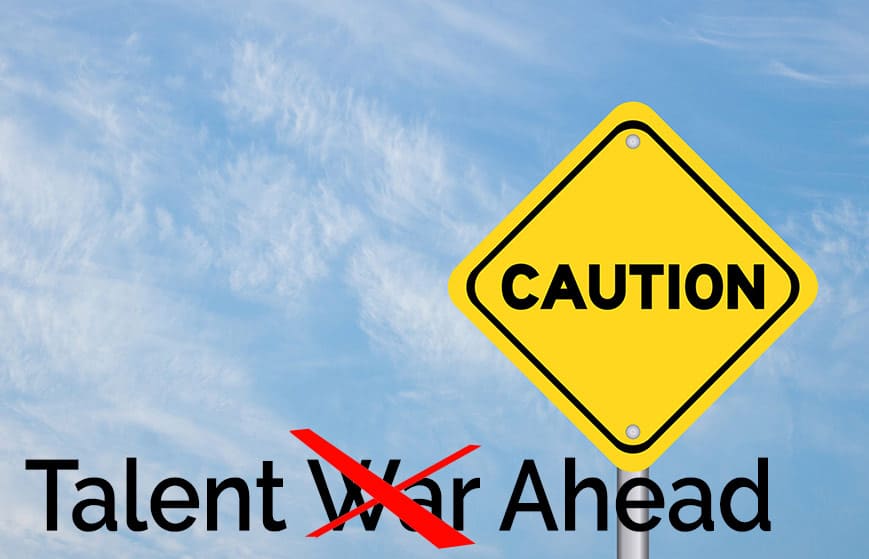“What do you mean it can create a negative outcome? If I at least try to improve my employees’ experience, will it not at least benefit them and the firm a little bit?”
This was the comment from a COO of a 400-person firm I shared in last month’s blog, CX & EX: Vicious or Virtuous Cycle. What this firm leader believed, and what I hear a lot, is that if he asked his employees for internal feedback once a year and tried to execute some part of what they told him, he would build loyalty. And, more importantly from an ROI perspective, he trusted that this increased loyalty would insulate him from the talent wars the industry is facing.
What our 15 years of experience have shown us is some strategies, while well-meaning, can actually do more harm than good. Today, I’d like to dig a bit deeper into employee experience (EX) strategies proven to drive revenue growth.
A Culture that Energizes
Let me state the obvious, your employees are human beings. Sure, you say. I know that. But did you know all human beings crave three things: safety, belonging, and mattering. They crave these things at work too.
What does a workplace that fosters safety, belonging, and mattering look like? Here are statements made by employees on high functioning teams:
- Feel safe to try new approaches, innovate, and share my ideas at work.
- Trust other members of my team to support my and the company’s success.
- Motivated by my company’s mission, vision, and values.
- When I make a mistake, I am corrected with respect and the desire to help me improve.
- I have a career development plan my leader continuously supports me in.
Are there any of these that aren’t important to you?
With more than 75% of the Gen Z and Millennial workforce indicating they will consider new opportunities that promise to meet these needs, creating a culture that focuses on these factors makes strong financial sense.
Don’t Mess Up Your Team
Creating a culture that supports and rewards a high functioning team atmosphere takes commitment. It does not necessarily involve your leadership team coming up with a detailed employee engagement program. According to an article in BU Today, the role of leadership is not to motivate their employees. It is to “not mess up their employees’ natural motivation."
A 2018 study, conducted by Valencore in collaboration with the Ken Blanchard Companies, identified a link between employees' motivation to work hard and workplace culture. The results linked high performance with leadership’s ability to tap into employees' natural motivation to achieve their potential and to contribute meaningfully.
Strategies
Five strategies your leadership team can adopt are:
- Set goals that have meaning. Take the time to help employees visualize what their role looks like and how it contributes to the overall benefit of the firm.
- Celebrate milestones focused on areas important to the individual and the firm. Celebrating milestones includes understanding your team’s challenges. If a milestone isn’t met, take the time to discover what is blocking progress.
- Provide meaningful feedback. Saying “great presentation” is nice. Taking the time to tell them "what you did benefits the firm in this way" shows employees you are really paying attention.
- Provide support and guidance while allowing employees to suggest their own ideas and solutions. Telling your team “Don’t bring me a problem without a solution” can inhibit your team from bringing challenges to leadership attention. Giving them the opportunity to share their solutions in a supportive manner will empower your team.
- Follow through on promises (including implicit promises). This was one of the challenges we shared in last month’s blog, CX & EX: Vicious or Virtuous Cycle. Leadership asked for feedback and then employees never heard anything more about it. This impacts motivation and feelings of trust.
Your employees bring energy and enthusiasm to be part of your team when they join your firm. Integrating these five strategies into your workplace culture is not difficult. Doing so does require intentionality and commitment of your firm’s leadership.
Measure Outcomes
The connection between positive employee experience (EX), positive client experience (CX), and loyalty has been well documented. With the obvious connection between client loyalty and increased share-of-wallet on your firm’s financial performance, the connection between EX and financial performance is important. Research has documented:
- Firms in the top quartile of EX experience 10% higher customer loyalty - Gallup
- Companies that excel at CX have 1.5 times more engaged employees – Tempkin Group
- High employee engagement can increase revenue by up to 2.5 times that of firms with lower engagement – Hay Group/Korn Ferry
- Highly engaged teams show 21% greater profitability – Gallup
- Disengaged employees cost US companies up to $550 billion annually – The Engagement Institute
The significance of these metrics makes measurement of your firm’s efforts essential and just makes sense. Think about your firm’s financial metrics. Leadership does not implement financial growth strategies without measuring the success of those strategies year over year. Why would understanding the success of your employee engagement strategies be any different?
Client Savvy has worked with more than 450 A/E/C firms in 16 years to design, implement, and measure their EX and CX initiatives. You understand the importance. We understand the process to integrate EX and CX into your existing workflow processes.
Email us at answers@clientsavvy.com to set up a complimentary 30-minute consultation.





